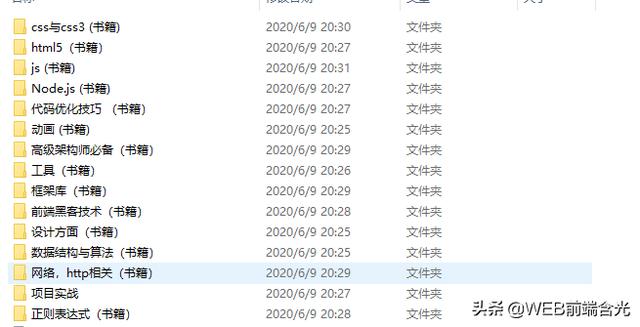方法 手写promise_WEB前端面试必问的经典问题Promise的理解与总结
Promise作为面试中的经典考题,我们一定要深刻学习和理解它! Promise有什么用呢?答:我们拿它解决异步回调问题。
概念
异步回调的一个很大的问题在于callback hell也就是“回调地狱”。多层嵌套回调函数,严重影响代码规范。Promise实际上是把回调函数从doSomething函数中提取到了后面的then()方法里,从而防止多重嵌套。一个Promise对象表示目前还不可用但是未来某个节点可以被解析的值,这个值要么被解析成功,要么失败抛出异常。它允许我们以同步的方式编写异步代码。
使用方法
Promise的构造函数用来构造一个Promise对象,其中入参匿名函数中resolve和reject这两个也都是函数。如果resolve执行了,则出发Promise.then中成功的回调函数,如果reject执行了,则触发了promise.then中拒绝的回调函数。
一个Promise对象一开始的值是pending准备状态,执行了resolve()后,Promise对象的状态值变为onFulfilled,执行了reject()后,状态值变为onRejected。Promise对象的状态值一旦确定,就不会再改变。
异常捕获
promise有两种异常捕获方式,一个是then中的reject,另一个是catch()方法。
then中的reject方法捕获异常
无法捕获当前then中抛出的异常
var promise = Promise.resolve();promise.then(()=>{ throw new Error("BOOM!");}).then((success)=>{ console.log(success);}, (error)=>{ console.log(error);});复制代码catch捕获异常
catch不仅能捕获then中抛出的异常,还能捕获前面promise抛出的异常,所以建议使用catch方法。
var promise = Promise.reject("Boom!");promise.then(()=>{ return "success";}).then((success) => { console.log(success); throw new Error("Another Boom!");}).catch((error) => { console.log(error); //BOOM!});复制代码手写Promise
基础篇-小试牛刀
首先来看基础版的代码,可以实现简单的同步代码,这一步是必须要能够写出来的。
// 首先要明确Promise是一个类,所以我们用class声明。// 其次,构造函数中接收一个executor,它有两个参数,一个是resolve,一个是reject// 这里要注意,resolve和reject都是函数class Promise(){ // 构造函数(入参是执行器,包括resolve和reject两个函数) constructor(executor){ // 必要的初始化,这里用到状态,值和原因三个变量 this.state = 'pending'; this.value = undefined; this.reason = undefined; // 定义成功函数,入参是value let resolve = value => { // 首先要判断state是否为等待态,如果不是则不做任何处理 if(this.state === 'pending'){ // 修改状态 this.state = 'fulfilled'; // 更新值 this.value = value; } }; // 定义失败函数,入参是失败原因 let reject = reason => { // 同样的逻辑 if(this.state === 'pending'){ this.state = 'rejected'; this.reason = reason; } }; // 这是promise对象的的主逻辑,执行executor,如果执行器出错,则捕获错误后执行reject函数 try{ executor(resolve, reject); }catch(err){ reject(err); } } // 定义Promise的then函数 // then方法接收两个参数,如果状态为fulfilled,执行onFulfilled // 如果状态为rejected,则执行onRejected then(onFulfilled, onRejected){ if(this.state === 'fulfilled'){ onFulfilled(this.value); }; if(this.state === 'rejected'){ onRejected(this.reason); }; }}复制代码进阶篇 解决异步实现
class Promise{ constructor(executor){ this.state = 'pending'; this.value = undefined; this.reason = undefined; // 成功回调函数数组和失败回调函数数组 this.onResolveCallbacks = []; this.onRejectedCallbacks = []; let resolve = value => { if(this.state === 'pending'){ this.state = 'fulfilled'; this.value = value; // 成功的话遍历成功回调函数数组然后执行这些函数 this.onResolvedCallbacks.forEach(fn=>fn()); } }; let reject = reason => { if(this.state === 'pending'){ this.state = 'rejected'; this.reason = reason; // 失败的话遍历失败回调函数数组然后执行这些函数 this.onRejectedCallbacks.forEach(fn=>fn()); } }; try{ executor(resolve,reject) }catch(err){ reject(err); } then(onFulfilled, onRejected){ if(this.state === 'fulfilled'){ onFulfilled(this.value); } if(this.state === 'rejected'){ onRejected(this.reason); } // 当状态为等待态时,我们要将成功/失败的回调函数加入到对应的数组中 if(this.state === 'pending'){ // onFulfilled传入到成功数组 this.onResolvedCallbacks.push(()=>{ onFulfilled(this.value); }) // onRejected传入到成功数组 this.onRejectedCallbacks.push(()=>{ onRejeced(this.reason); }) } } }}复制代码威力加强版 解决链式调用
class Promise{ constructor(executor){ this.state = 'pending'; this.value = undefined; this.reason = undefined; this.onResolvedCallbacks = []; this.onRejectedCallbacks = []; let resolve = value => { if(this.state === 'pending'){ this.state = 'fulfilled'; this.value = value; this.onResolvedCallbacks.forEach(fn=>fn()); } }; let reject = reason => { if(this.state === 'pending'){ this.state = 'rejected'; this.reason = reason; this.onRejectedCallbacks.forEach(fn=>fn()); } }; try{ executor(resolve,reject); }catch(err){ reject(err); } } then(onFulfilled, onRejected){ let promise2 = new Promise((resolve,reject) => { if(this.state === 'fulfilled'){ let x = onFulfilled(this.value); resolvePromise(promise2, x, resolve, reject); }; if(this.state === 'rejected'){ let x = onRejected(this.reason); resolvePromise(promise2, x, resolve, reject); }; if(this.state === 'pending'){ this.onResolvedCallbacks.push(()=> { let x = onFulfilled(this.value); resolvePromise(promise2, x, resolve, reject); }) this.onRejectedCallbacks.push(()=>{ let x = onRejected(this.reason); resolvePromise(promise2, x, resolve, reject); }) }; }); return promise2; } function resolvePromise(promise2, x, resolve, reject){ if(x === promise2){ return reject(new TypeError('Chaining cycle detected for promise'); } let called; if(x != null && (typeof x === 'object' || typeof x === 'function')){ try{ let then = x.then; if(typeof then === 'function'){ then.call(x, y=>{ if(called){ return; } called = true; resolvePromise(promise2,y,resolve,reject); }, err => { if(called) return; called = true; reject(err); }) }else{ resolve(x); } }catch(e){ if(called) return; called = true; reject(e); } }else{ resolve(x); } }}复制代码如果你现在也想学习前端开发技术,在学习前端的过程当中有遇见任何关于学习方法,学习路线,学习效率等各方面的问题,你都可以加入到我的Q群中:前114中6649后671,里面有许多前端学习资料以及2020大厂面试真题免费获取,希望能够对你们有所帮助。

